2002 North Main Street
Santa Ana, California 92706
TEL: 714.567.3600
Black Jazz Performers as Photographed by Leigh Wiener
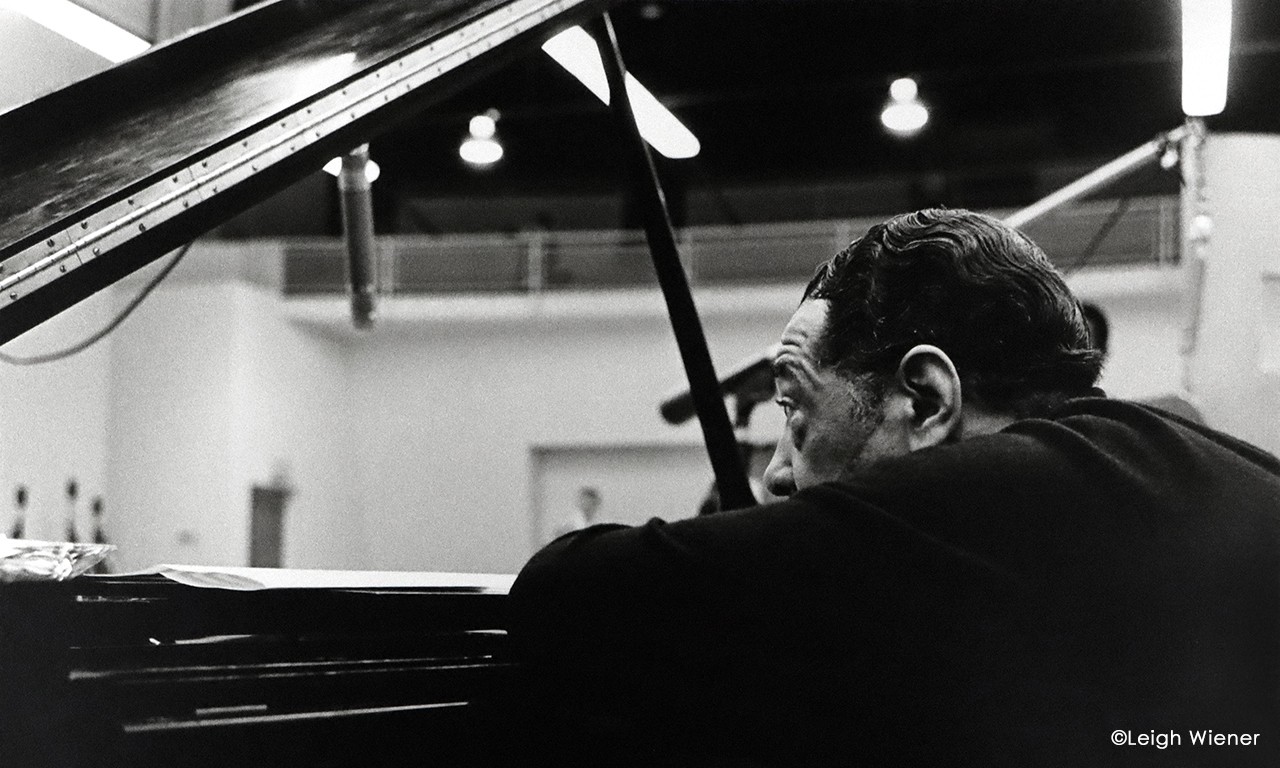 |
| Detail of Steinway for Duke, March 1961 Leigh A. Wiener (American, 1929-1993); Berlin, Germany Gelatin silver print on ektalure paper; 16 × 20 in. 87.6.7 Gift of Leigh A. Wiener. ©Leigh Wiener / 7410 Inc. All rights reserved |
Black History Month
Many of the most famous American musicians and singers from the 20th and 21st centuries are Black artists. In the face of overwhelming prejudice, these great individuals led a radical evolution in the sound of American music and became key figures in combatting racial inequality. In celebration of Black History Month, the Bowers Blog looks at photographs of three Black jazz artists taken by the acclaimed photographer Leigh Wiener between 1958 and 1962. These prints were formally donated to the Bowers Museum by Wiener shortly after his works were exhibited here in Black Americans: Then and Now, between February 14 and March 29, 1987.
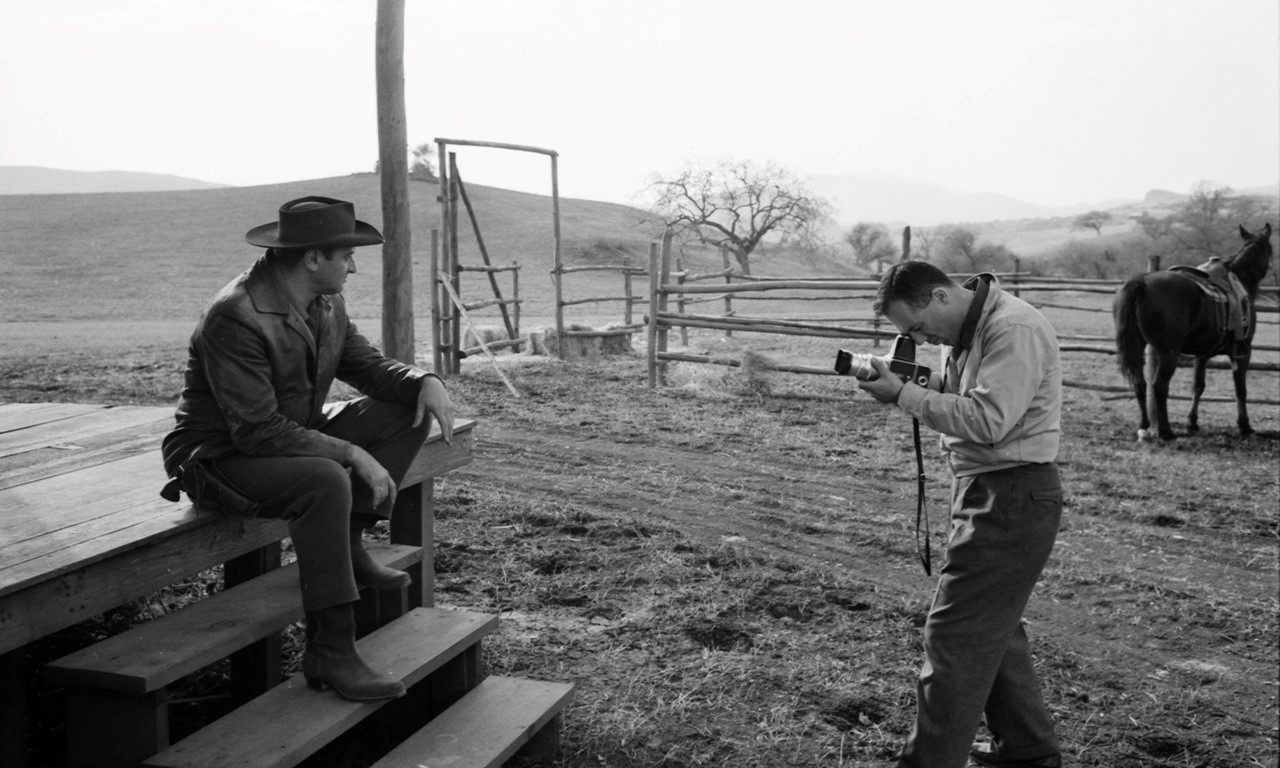 |
| Leigh Wiener Photographing Frankie Laine, December 8, 1960 Stan Moore (American); Iverson Ranch, Los Angeles, California Image courtesy of Devik Wiener ©Leigh Wiener / 7410 Inc. All rights reserved |
The Photographer: Leigh Wiener
Wiener was born in New York City in 1929 and developed an interest in photography at an early age. By 15 he had already sold his first photographs to Collier’s Weekly. Two years later he moved out to Los Angeles and began studying political science at UCLA at the same time as he started working at the LA Times’ library. After graduating, his first big break as an upstart photojournalist came in 1949 with a photograph of the empty swing of Kathy Fiscus—a three-year old whose tragic death shook America.
Over the course of his career, Wiener photographed an incredible number of artists, musicians, actors, and more, including every living United States president. What the firsthand accounts collected for his exhibition at the Bowers evidence can already be seen in his photography: he did more than capture a static moment in time, he mentally and emotionally engaged his subjects and by doing so photographed them in a more human light than his contemporaries.
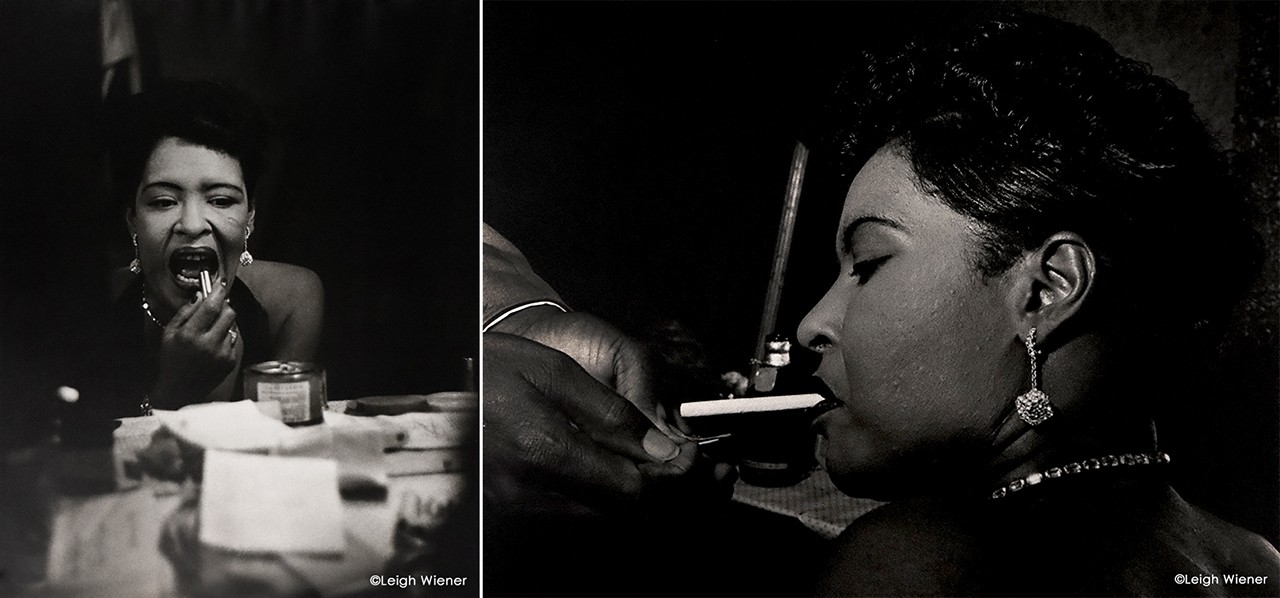 |
|
| The Billie Holiday Make-up, January 20, 1954 Leigh A. Wiener (American, 1929-1993); Berlin, Germany Gelatin silver print on ektalure paper; 20 × 16 in. 87.6.1 Gift of Leigh A. Wiener. ©Leigh Wiener / 7410 Inc. All rights reserved |
Billie in Berlin, January 20, 1954 Leigh A. Wiener (American, 1929-1993); Berlin, Germany Gelatin silver print on ektalure paper; 16 × 20 in. 87.6.3 Gift of Leigh A. Wiener. ©Leigh Wiener / 7410 Inc. All rights reserved |
Billie Holiday
Among the most influential jazz singers of all time, Billie Holiday’s European debut came in 1954 as part of a touring concert group with the Buddy DeFranco Quartet and Red Norvo Trio. Wiener photographed her on January 20 while she was performing in Berlin and later recounted this story:
“Jazz Club – USA was touring Germany. It was a bitter cold night in Berlin, but inside the large hall, things were warming up. Buddy DeFranco opened the show with ‘I’ll Remember April’ which had a ten-minute solo by his drummer, Bobby White. Then came Red Norvo doing ‘Dancing on the Ceiling.’ Now, it was Billie's turn. Like the audience, I had really come for Billie Holiday. Out she came and went right to it: ‘My Man,’ ‘Billie's Blues,’ ‘Tenderly,’...
“‘Be right back,’ she told the audience as she headed backstage for a break. A friend greeted her with a beer. Another lit her cigarette. Suddenly she noticed me with three cameras around my neck. ‘Want a beer, kid?’ ‘I’d rather have more Billie Holiday,’ I replied. ‘You can have both,’ she said as she handed me a cold beer. ‘Anything special?’ she said. ‘I’ve always loved your ‘Lover, Come Back to Me,” I answered. I didn't think she heard me as she turned to some backstage friends. “To a loud ovation, Billie Holiday was back on stage. She must have heard me, because her first song was ‘Lover, Come Back to Me.’”
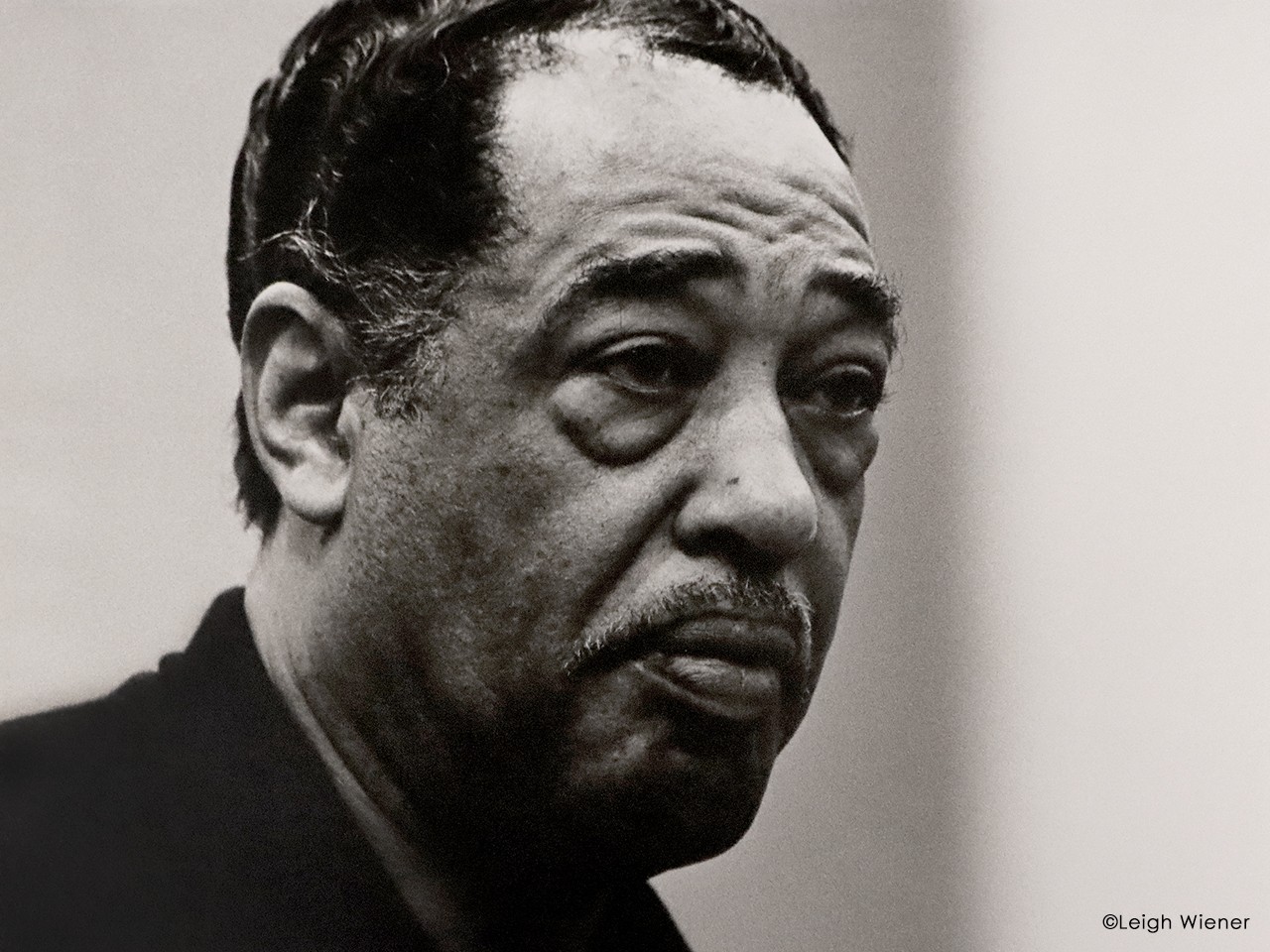 |
| Sophisticated Man (Duke Ellington), March 1961 Leigh A. Wiener (American, 1929-1993); Berlin, Germany Gelatin silver print on ektalure paper; 16 × 20 in. 87.6.7 Gift of Leigh A. Wiener. ©Leigh Wiener / 7410 Inc. All rights reserved |
Duke Ellington
Both a band leader and pianist, Edward Kennedy "Duke" Ellington was one the most famous and influential jazz band leaders of all time. On either March 1st or 2nd, 1961, Leigh Wiener photographed Ellington while he was recording Piano in the Foreground at Columbia Records. The photographs were used to advertise Ellington's new album in the New Yorker. Wiener recalled the day the photo was taken:
“There was a break in the session, and I went over to Duke Ellington to tell him how much I enjoyed his music. ‘Thank you,’ he said, ‘you’re very kind.’ ‘Alfred Eisenstaedt would envy me tonight,’ I told Ellington. ‘Who's he?’ asked the gentle man, ‘and why would he envy you?’ ‘Eisenstaedt is a fine photographer,’ I replied. ‘He works for LIFE and one of his favorite ‘tools’ besides his camera is a ladder.’ ‘Really?’ asked Ellington. ‘Why?’ ‘He feels too many people go through life seeing the world at five foot, two inches,’ I answered. ‘A ladder helps him see different.’ ‘I like that,’ said Ellington. ‘Me? I like to see my boys and I like my boys to see me.’ He laughed. ‘If you want to be like your friend from LIFE, help yourself. There's another ladder over there.’ As he pointed to a corner of the studio, he added, ‘ladders are meant to be shared. Have yourself some fun.’”
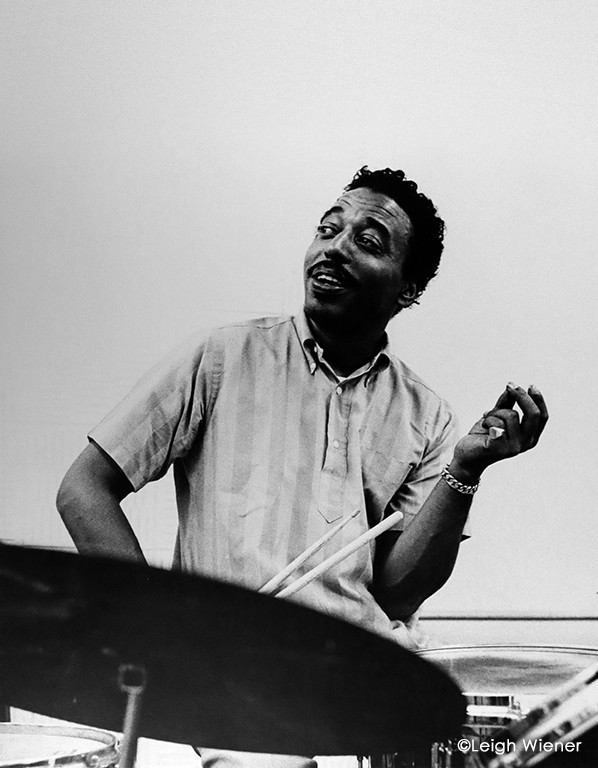 |
| Chico's Rhythm, February 19, 1962 Leigh A. Wiener (American, 1929-1993); California Gelatin silver print on ektalure paper; 16 × 20 in. 87.6.39 Gift of Leigh A. Wiener. ©Leigh Wiener / 7410 Inc. All rights reserved |
Chico Hamilton
As a pioneer of California’s cool jazz sound, Foreststorn "Chico" Hamilton was a great drummer and band leader. While Hamilton was recording Drumfusion at Columbia Records on February 19, 1962, Wiener photographed Chico and later shared this story about the day:
“Chico Hamilton will always have a special place in my professional memories. He asked me for a favor that no celebrity had ever asked of me before. We were working in my studio. I had paused to load a camera. Suddenly Hamilton almost blurted out, ‘Can I ask you a personal favor?’ ‘Sure,’ I answered. ‘Well,’ said Hamilton, ‘it’s my son. He likes photography and I'm not sure how to help him. I thought if you might take his picture, he might start to talk with you about it and he might learn a little from you.’ ‘We’ll do it Saturday,’ I told the drummer. ‘Saturday?’ he repeated. ‘Saturday,’ I repeated.’”
Text and images may be under copyright. Please contact Collection Department for permission to use. Information subject to change upon further research.

Comments